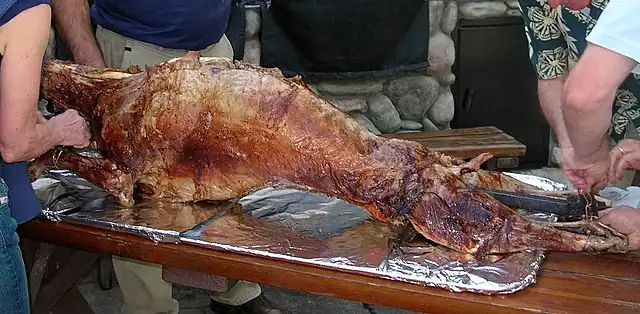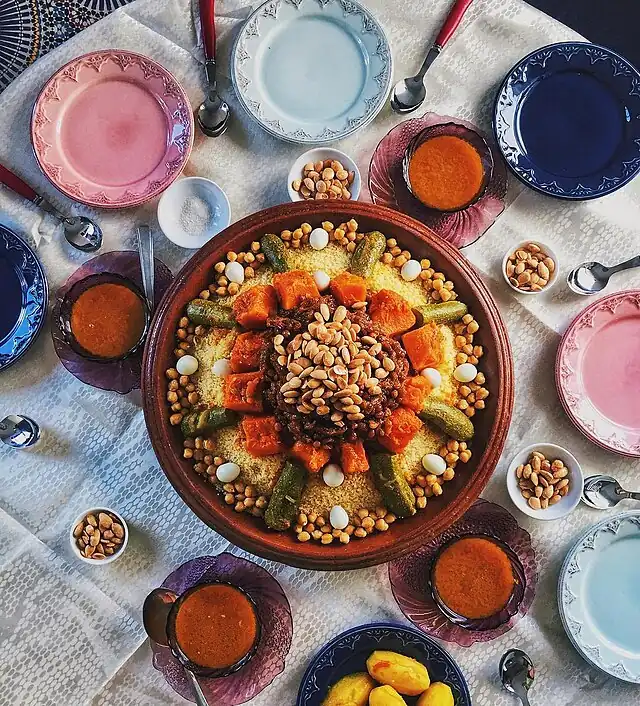The cuisine of North Africa, also known as Maghrebi cuisine, is shaped by the Mediterranean and desert climate. Influences from the Levant starting no later than the Arab invasions and arguably as early as the Phoenician colonies, and more recently from the Ottoman Empire, have brought similarities to Middle Eastern cuisine. However, there are quite a few differences, and many of the people in this region are Berbers, rather than Arabs, with their own traditions.
While influenced by French cuisine due to French colonization, Maghrebi cuisine has in turn been successful in France, largely owing to North African immigration to France.
This article is issued from Wikivoyage. The text is licensed under Creative Commons - Attribution - Sharealike. Additional terms may apply for the media files.


